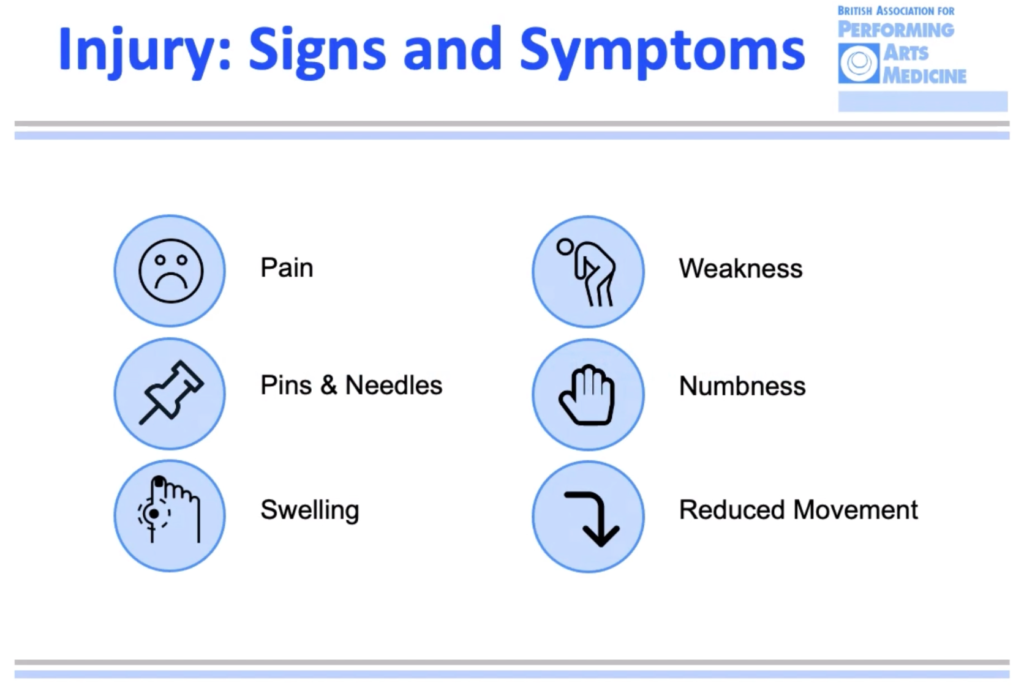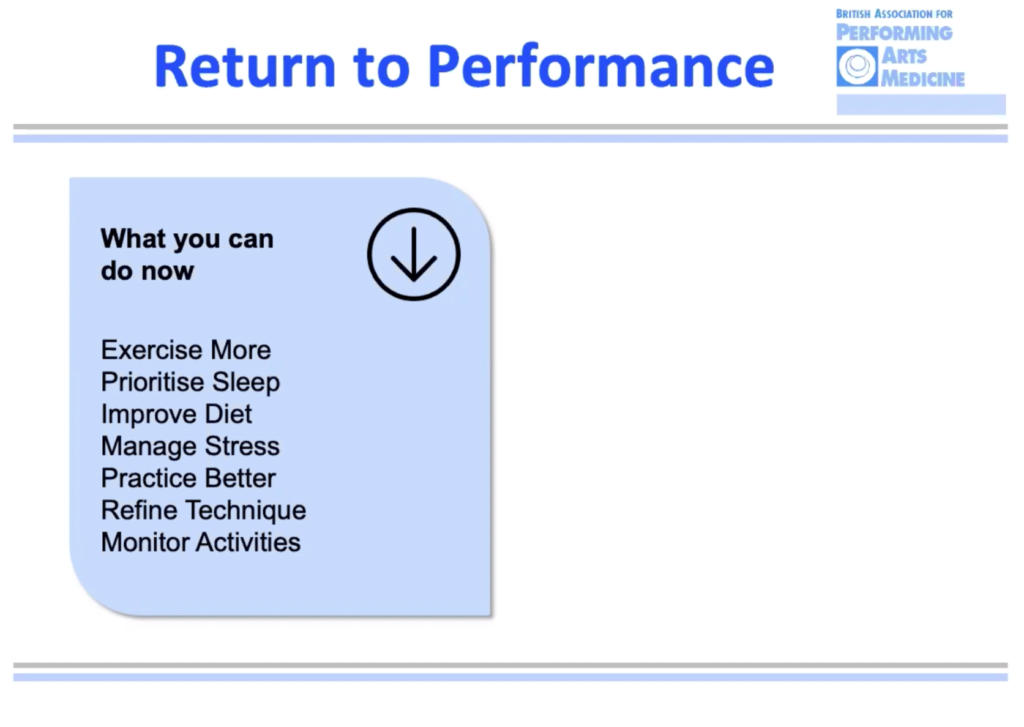Playing-Related Musculoskeletal Disorders (PRMDs), otherwise known as injuries sustained through playing your instrument (see below for typical symptoms) seem to be an unfortunate fact of life for musicians.

You can see from the visual below the complexity and multifactorial nature of pain. This particular representation is from an important 2019 paper led by Dr. Jacek Cholewicki from the Centre for Orthopaedic Research at Michigan State that delves into the role of biomechanics in the treatment of low back pain.

Since pain is such a multifactorial problem, any approach to resolving it must reflect this. Typically when pianists get injured, they usually rest and get physiotherapy, reflecting an appropriate response to the factors labelled in orange (tissue injury/pathology). After a period of rest, they return to playing but unfortunately quite often more PRMDs develop and the cycle repeats.
There is no one-size-fits-all fix and not every injury can be prevented – that’s life. However, outcomes can be improved if more contributing factors are taken into account and addressed, from improving the low hanging fruit of lifestyle factors such as general fitness, nutrition, hydration, and sleep to the more complicated issues of ergonomically optimising piano technique. See below for the British Association of Performing Arts Medicine’s performing arts health pyramid and recommendations for resolving PRMDs.


The recommendation to ‘refine technique’ can be a daunting one. Where to start? What is optimal piano technique anyway? Who can help me? This has been the subject of my own action research and continuing professional development for the past number of years.
I have been studying the principles of the Taubman Approach to piano technique with the foremost experts from the Golandsky Institute in both the USA and Australia, and this has been an extremely important piece of the puzzle. It is a topic I will delve into more deeply in my blog. This kind of expertise has not been available in Ireland, a situation I have addressed through my studies, the latter stages of which have been supported by the Arts Council. I incorporate this into my teaching at all levels and endeavour to help my students optimise their techniques and develop free and comfortable playing.
As I continue with this blog, I’ll be sharing some of the things I’ve learned through my ongoing research, in addition to some of my more general thoughts and observations about music, piano, and piano teaching. I hope you will find it interesting, and above all helpful. Thanks for joining me!
Aoife
hello@aoifemacalister.com
Image Sources:
BAPAM (2021) Musician’s Health Webinar with physiotherapist Lucie Raynor
Cholewicki, J. et al (2019) ‘Can Biomechanics Research Lead to More Effective Treatment of Low Back Pain? A Point-Counterpoint Debate’ Journal of Orthopaedic & Sports Physiotherapy 49(6): 425-436